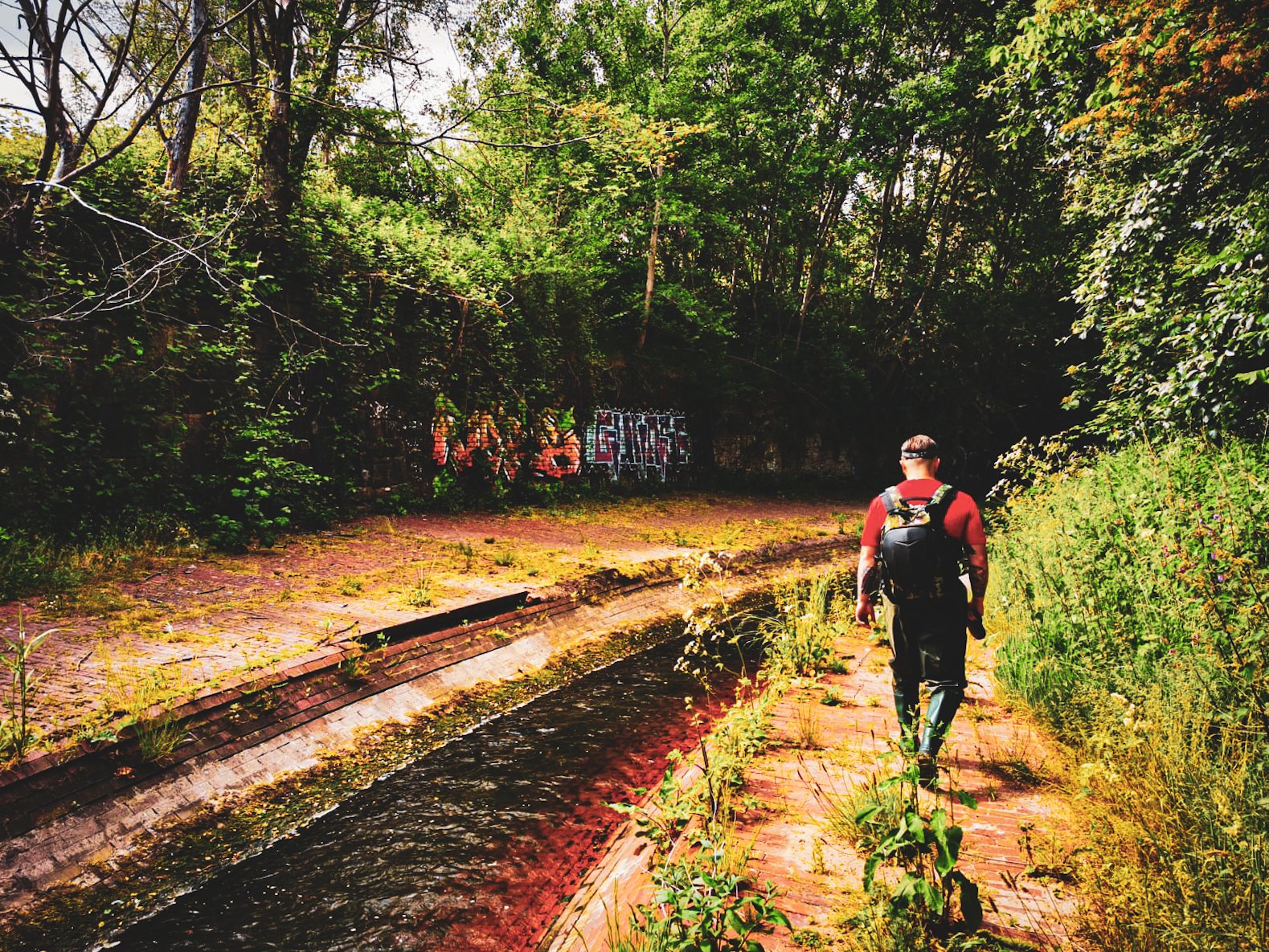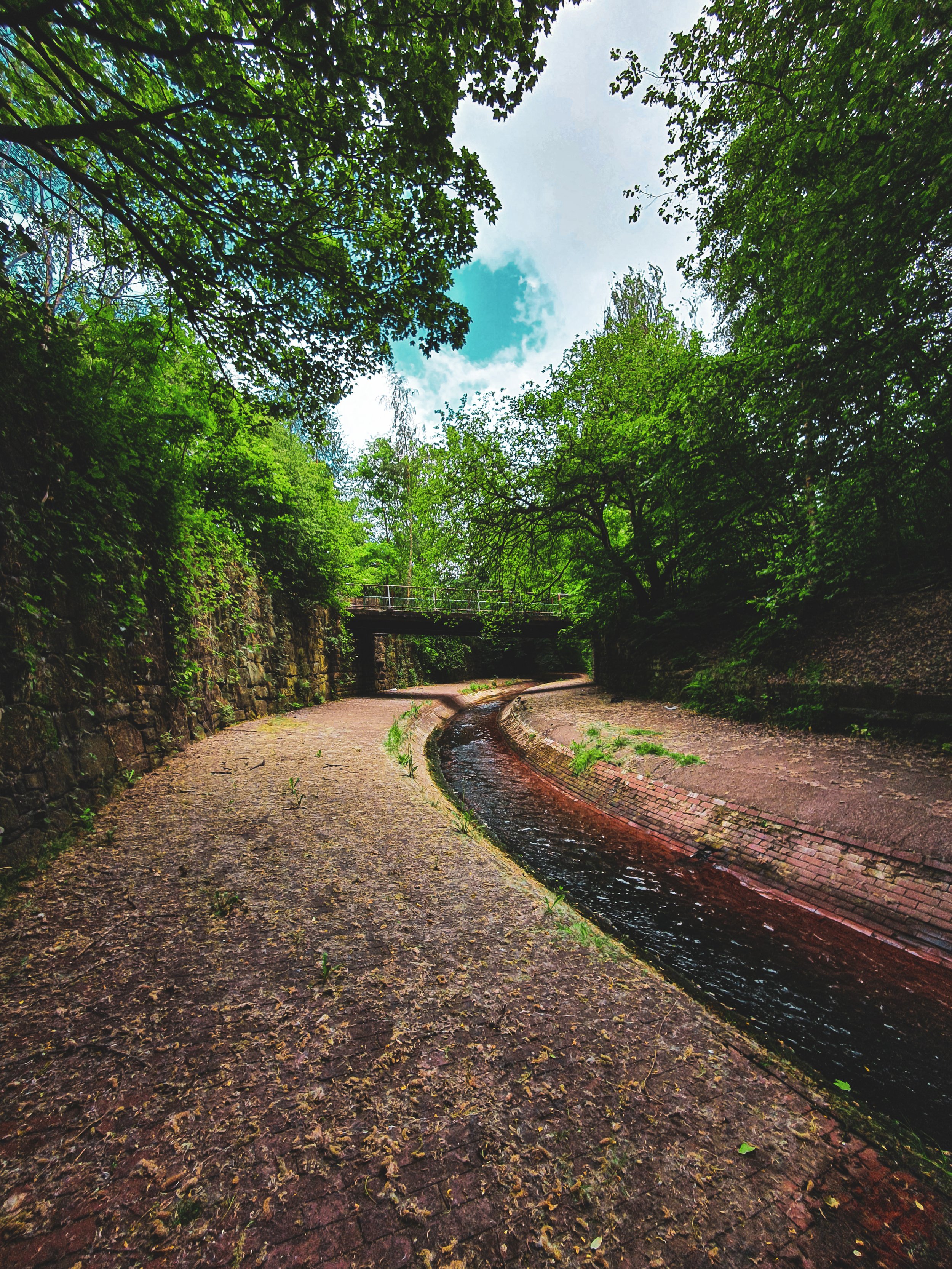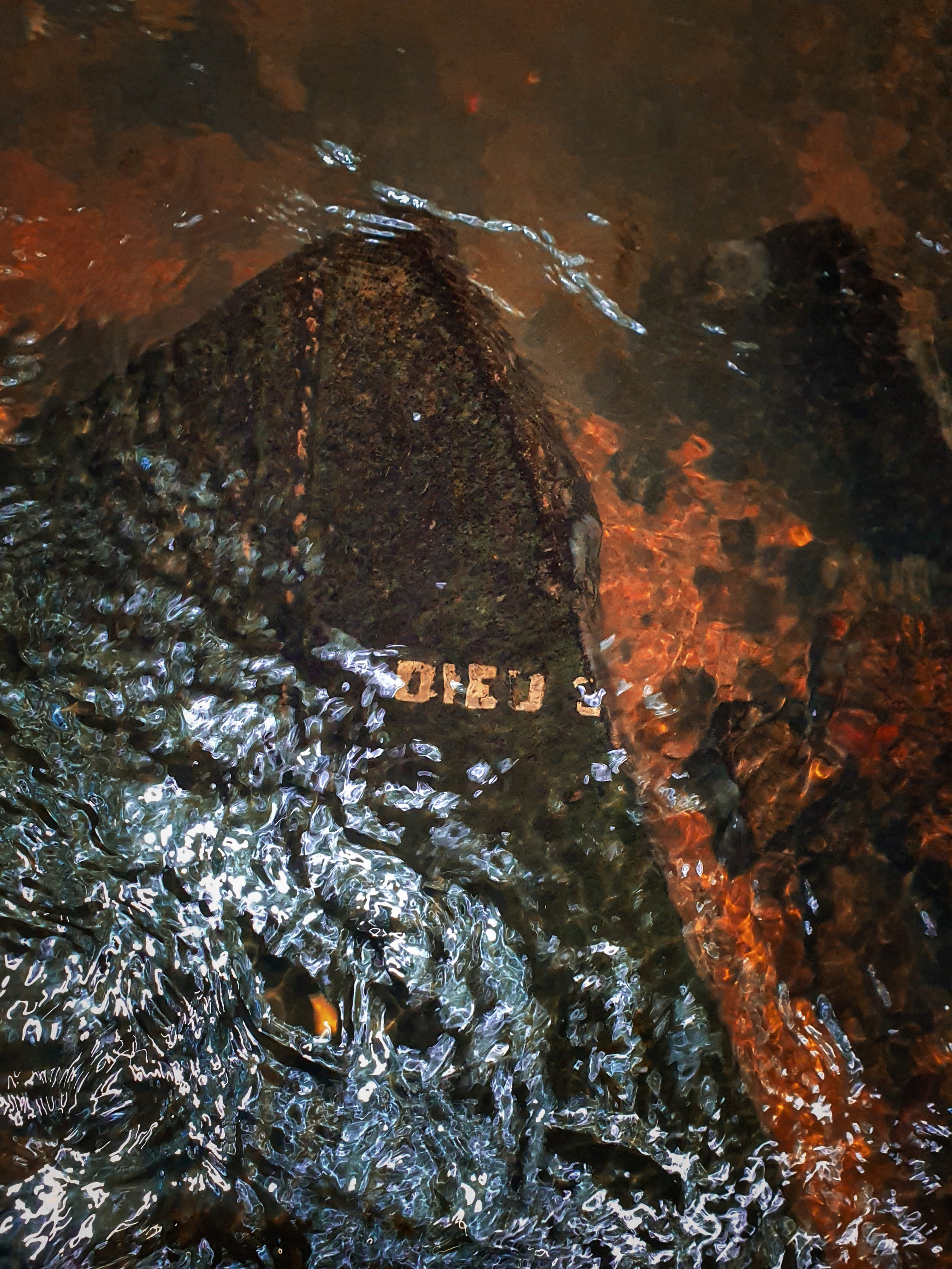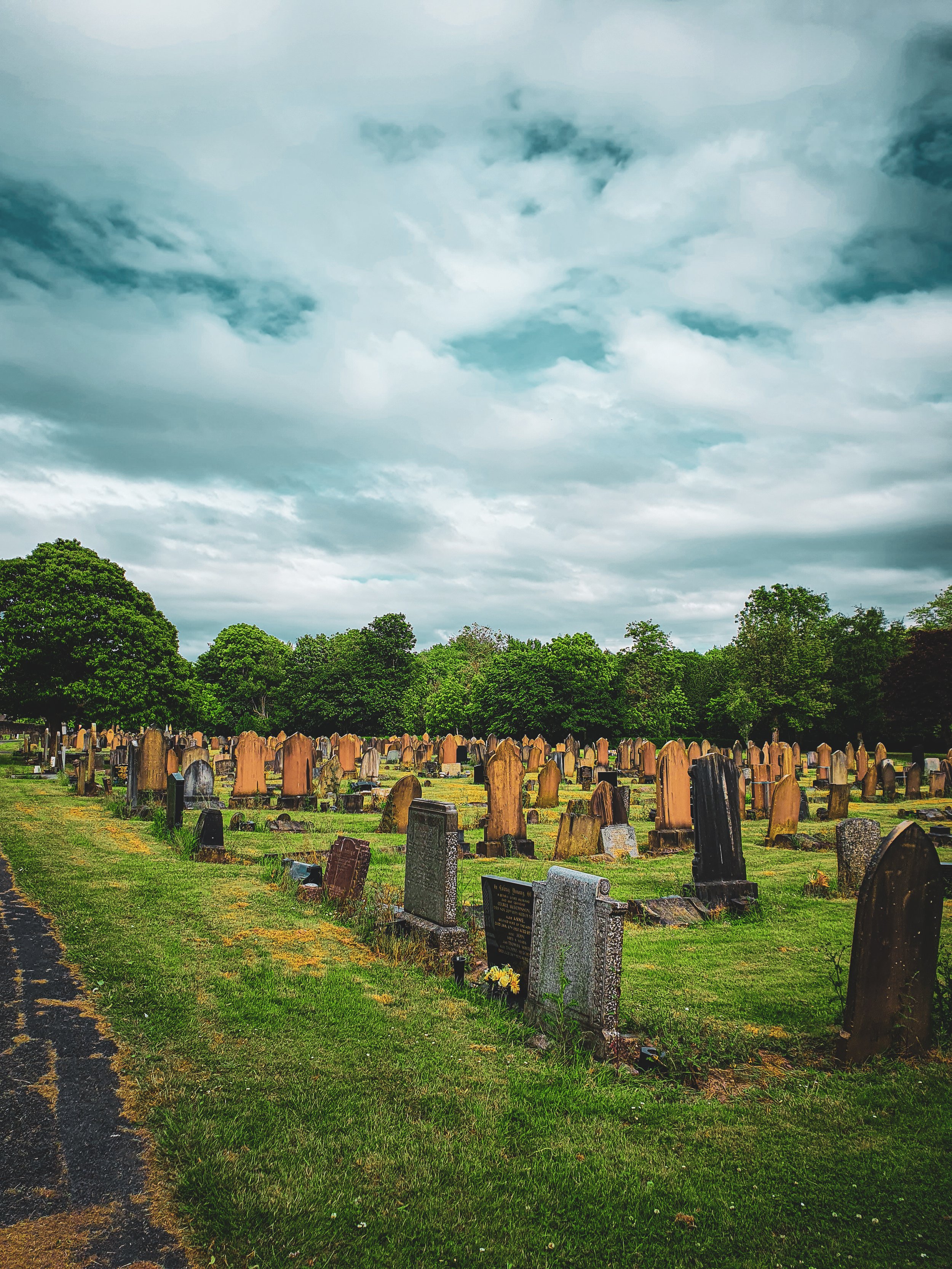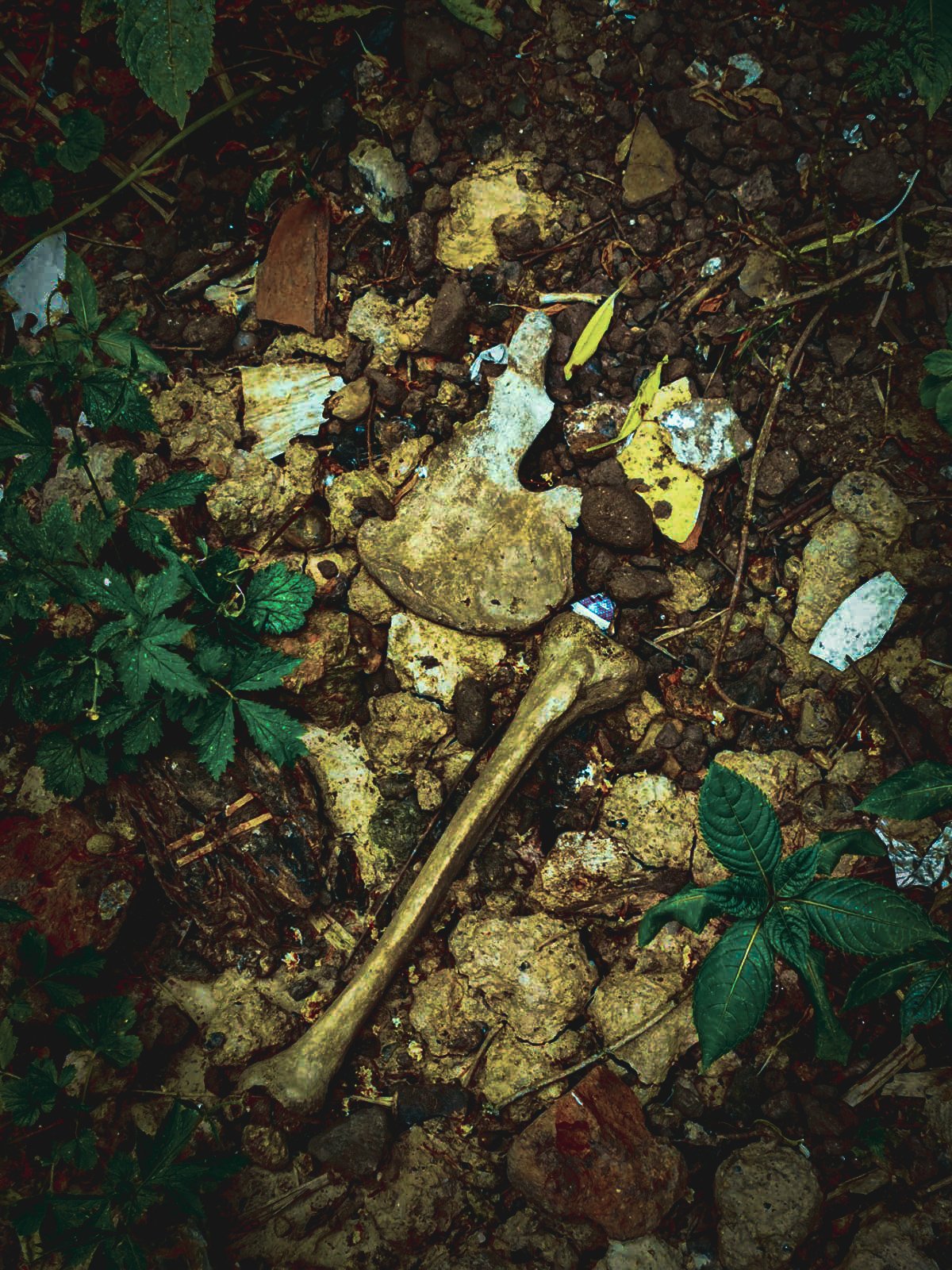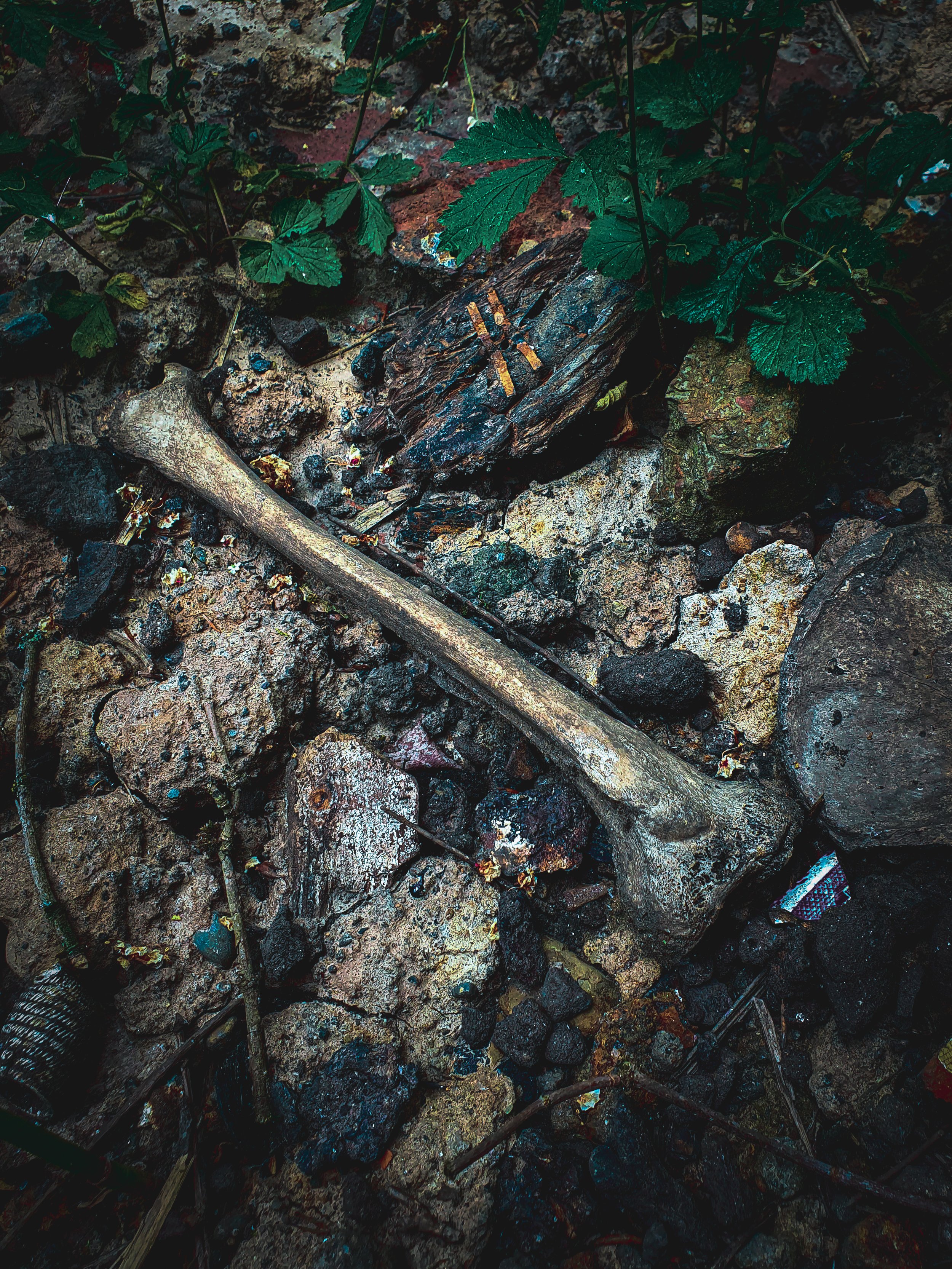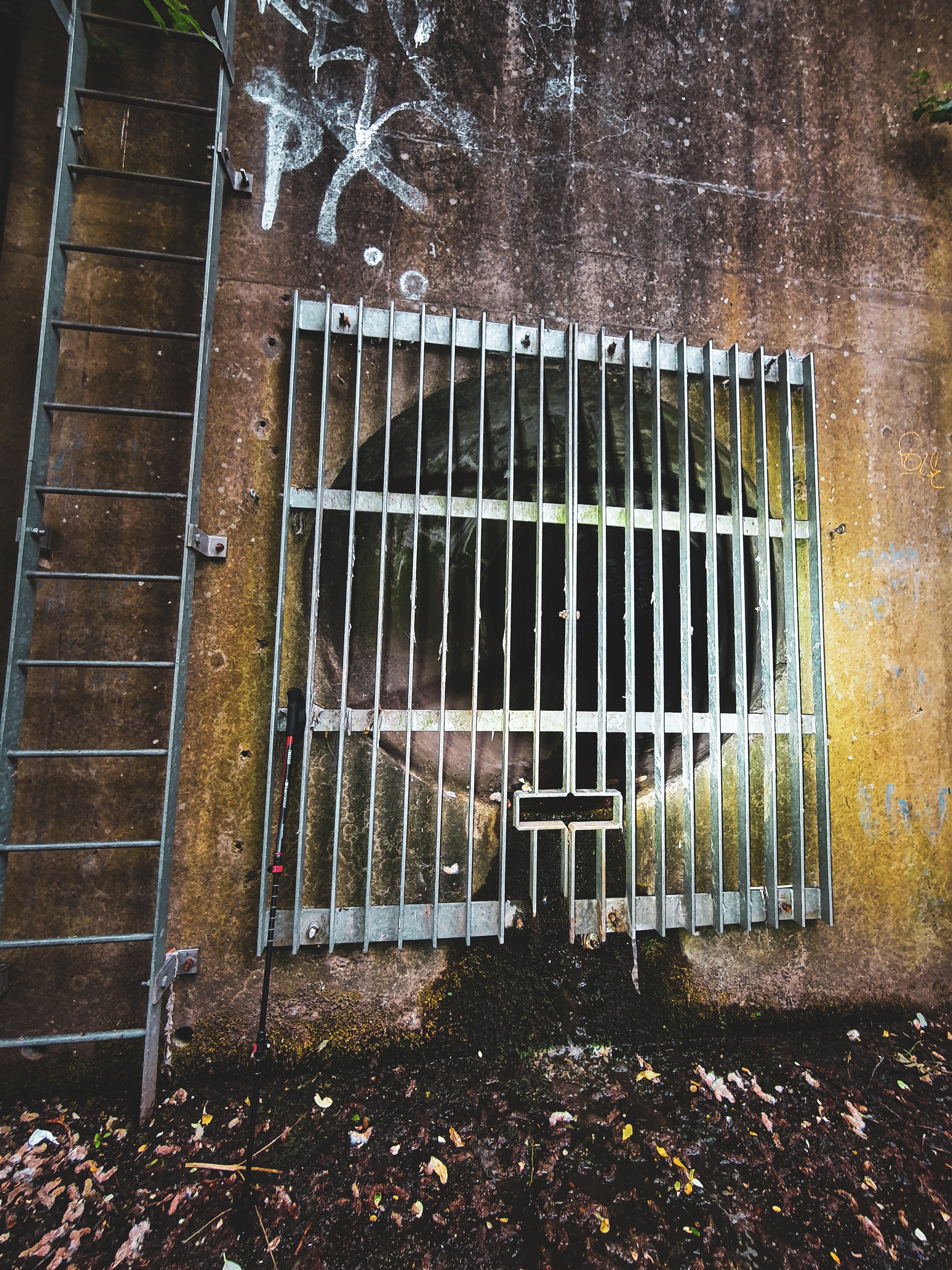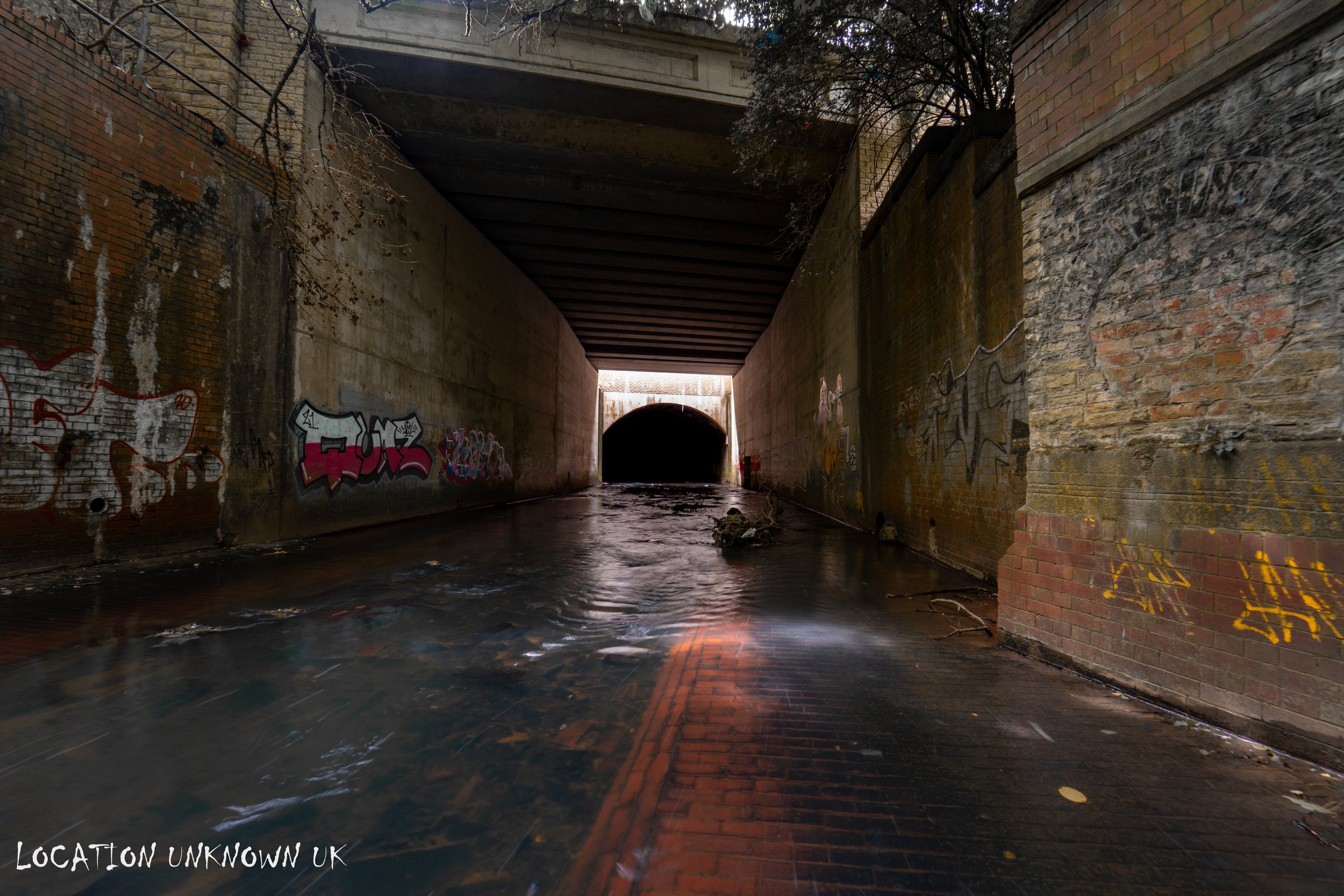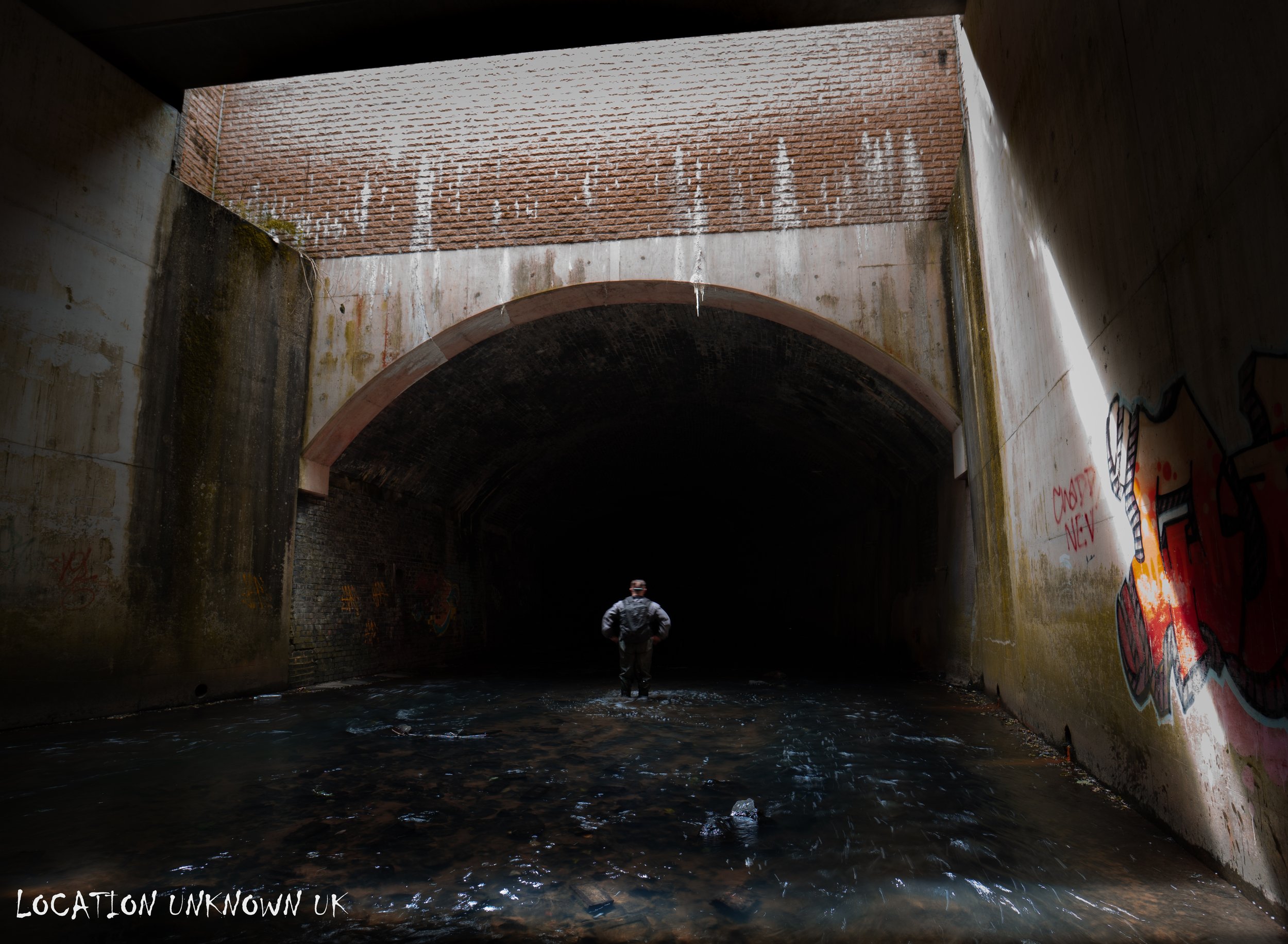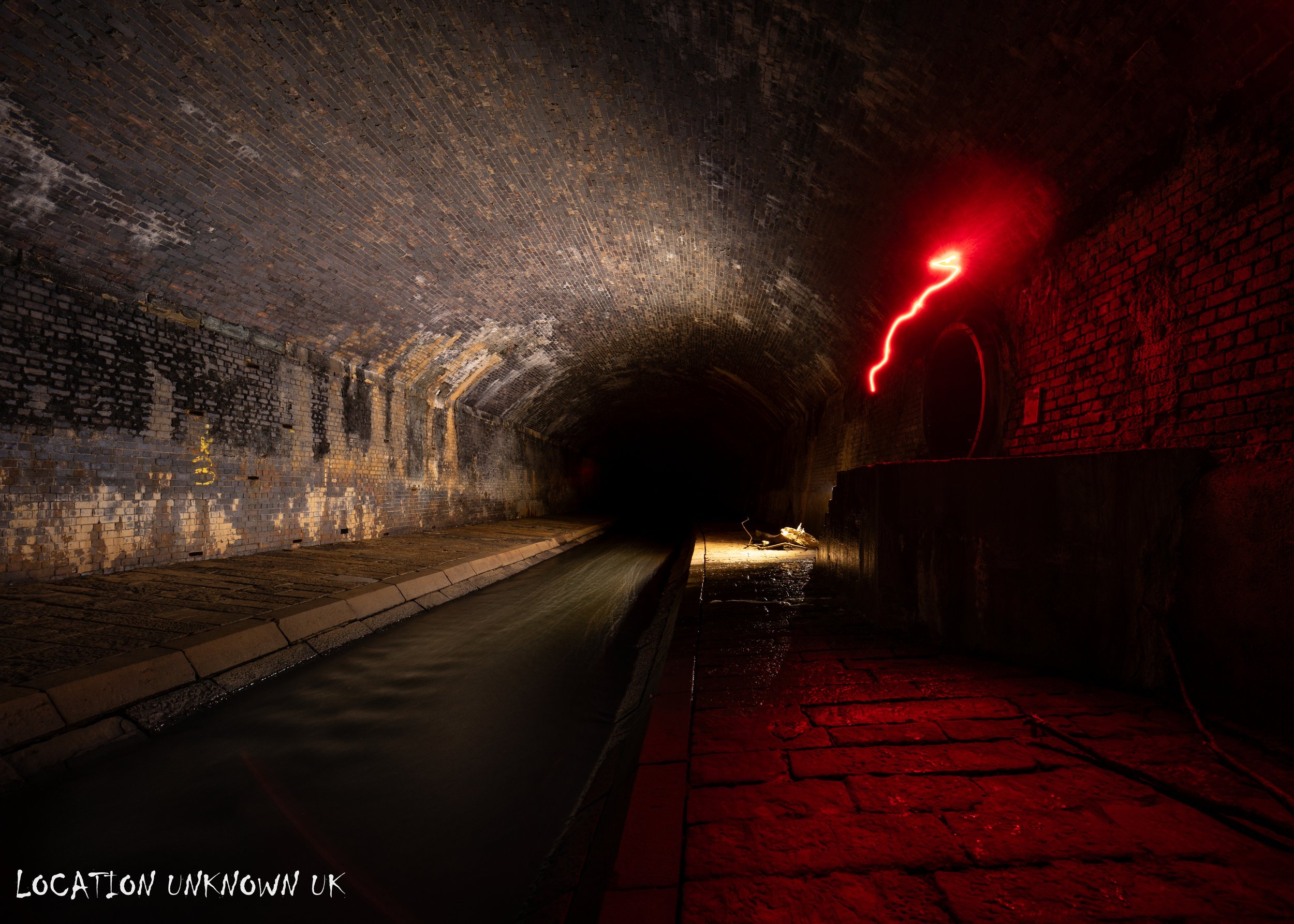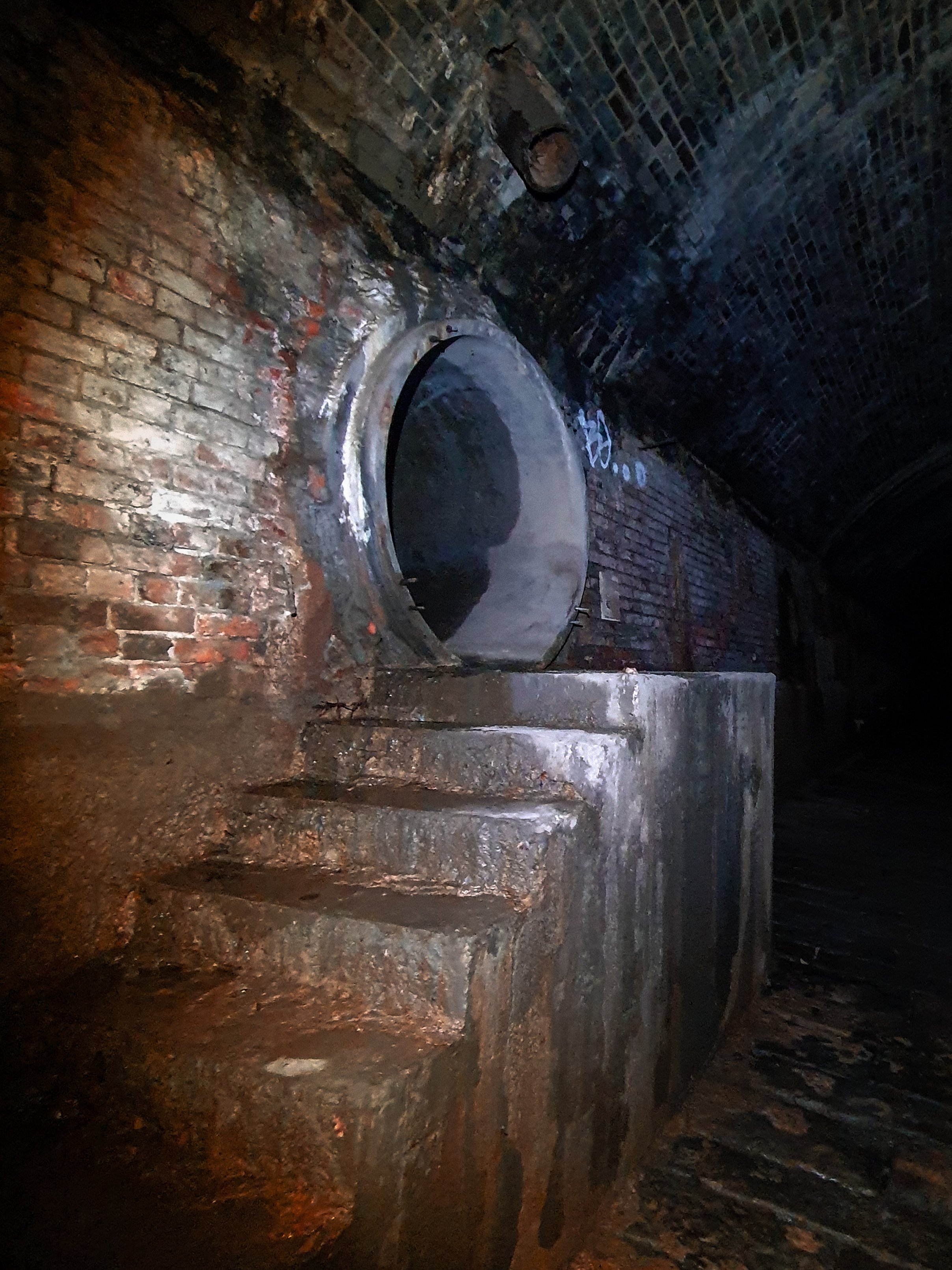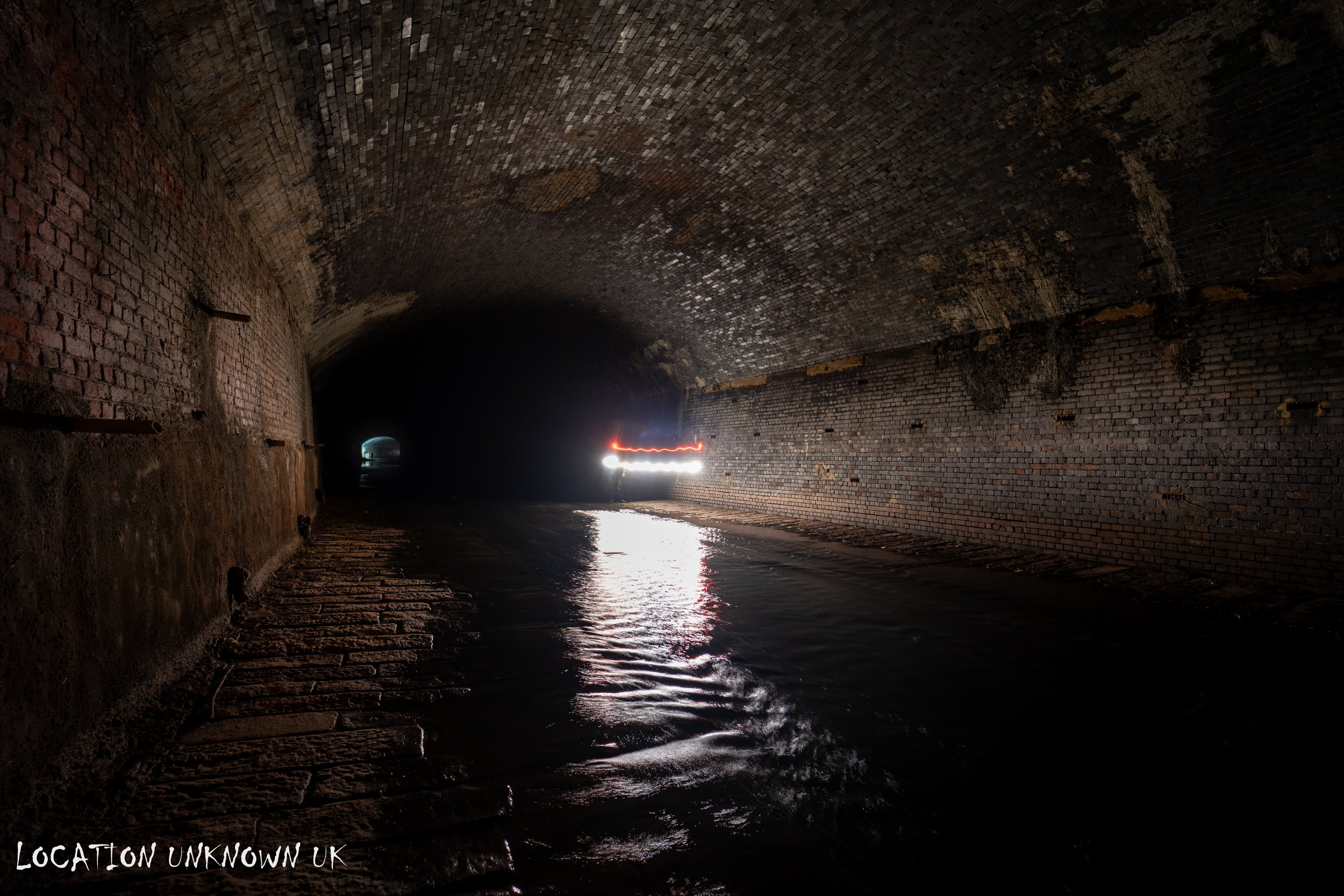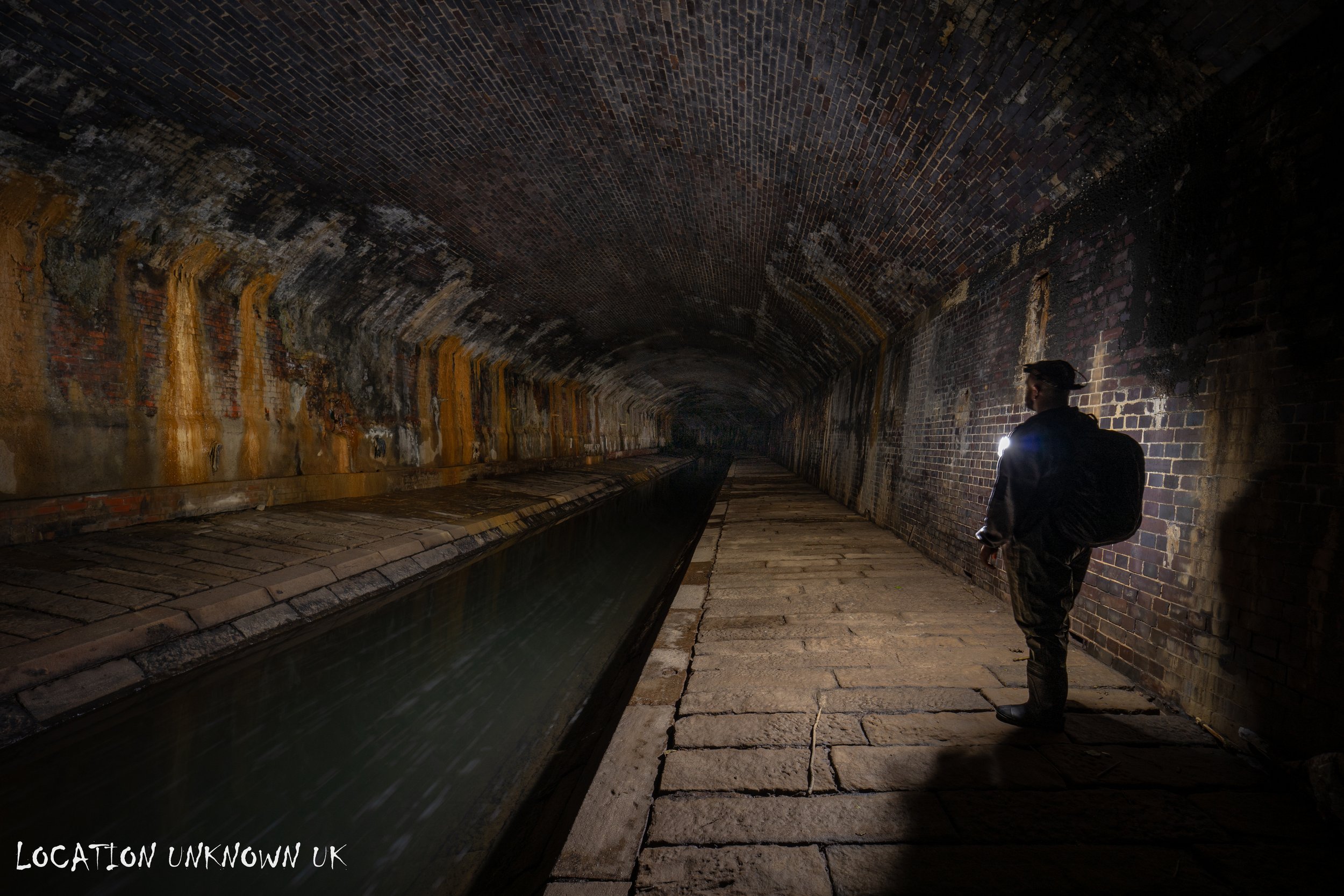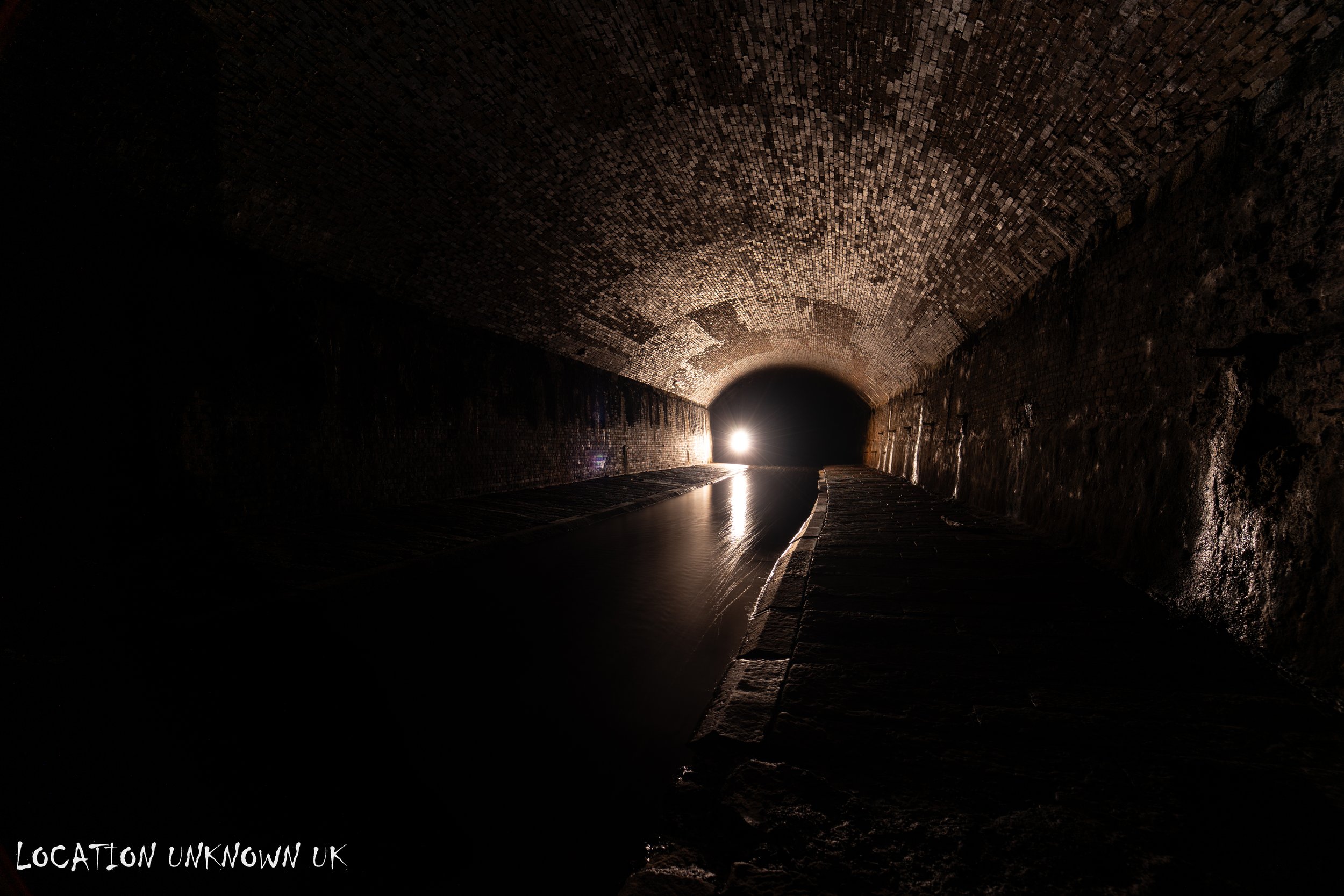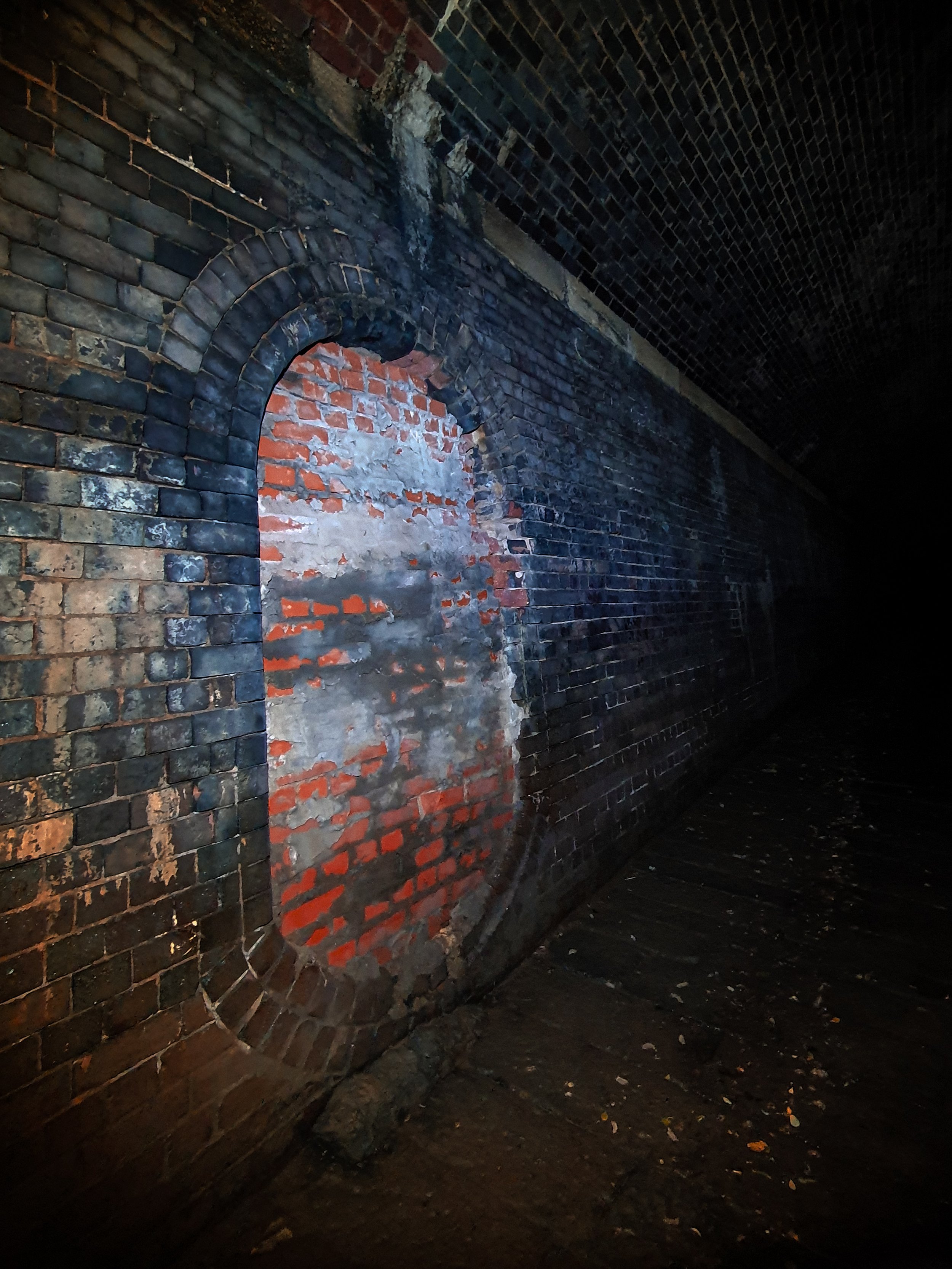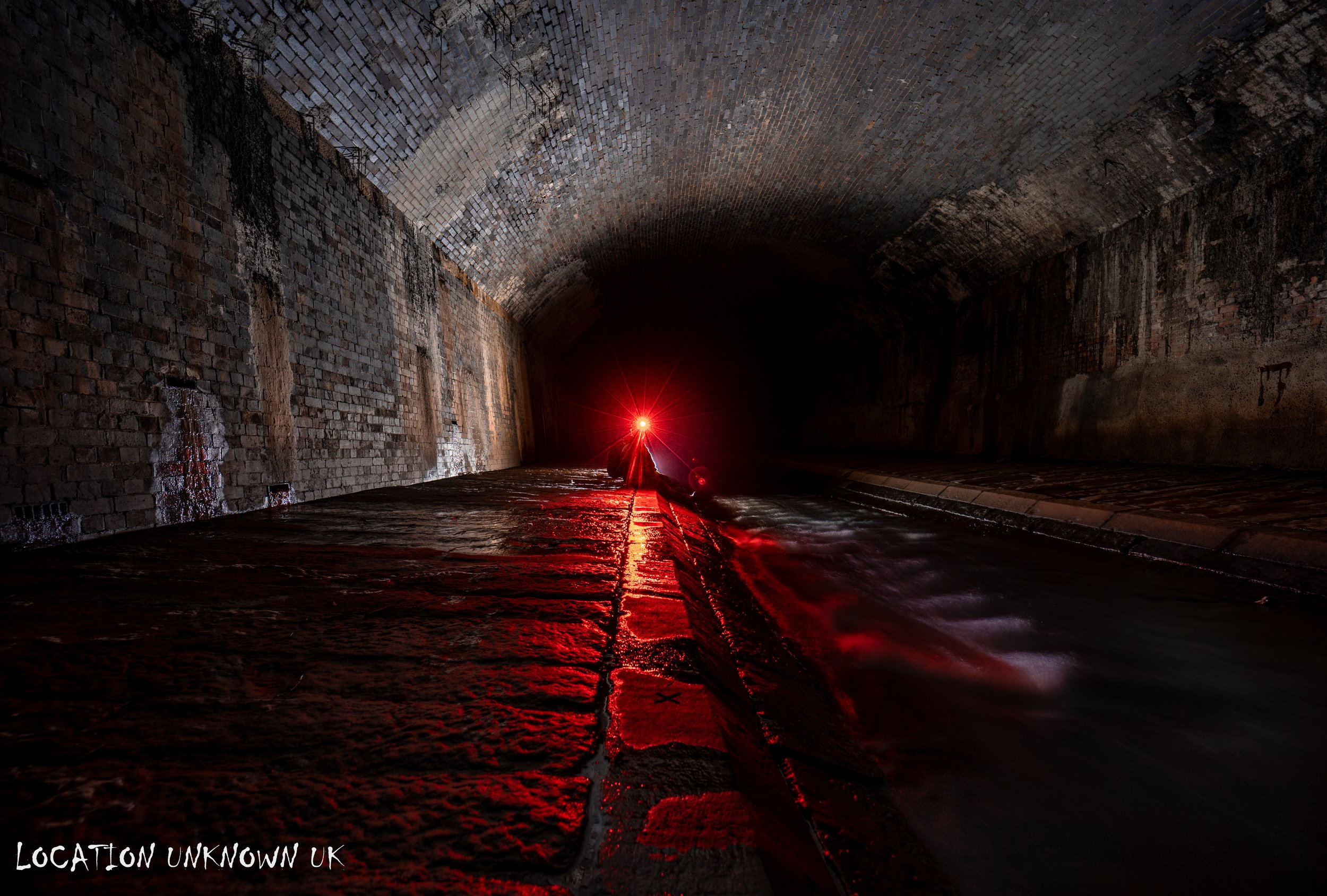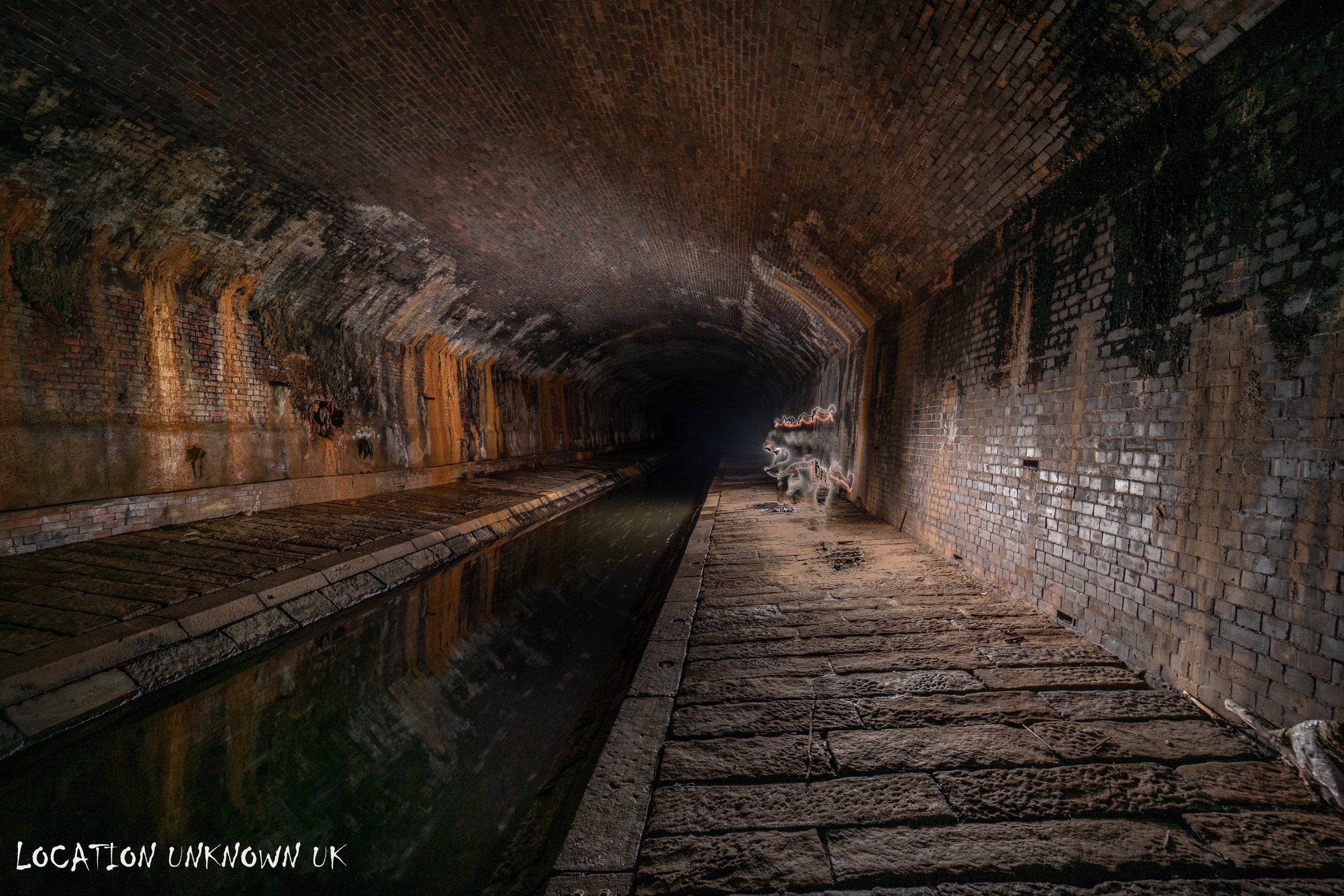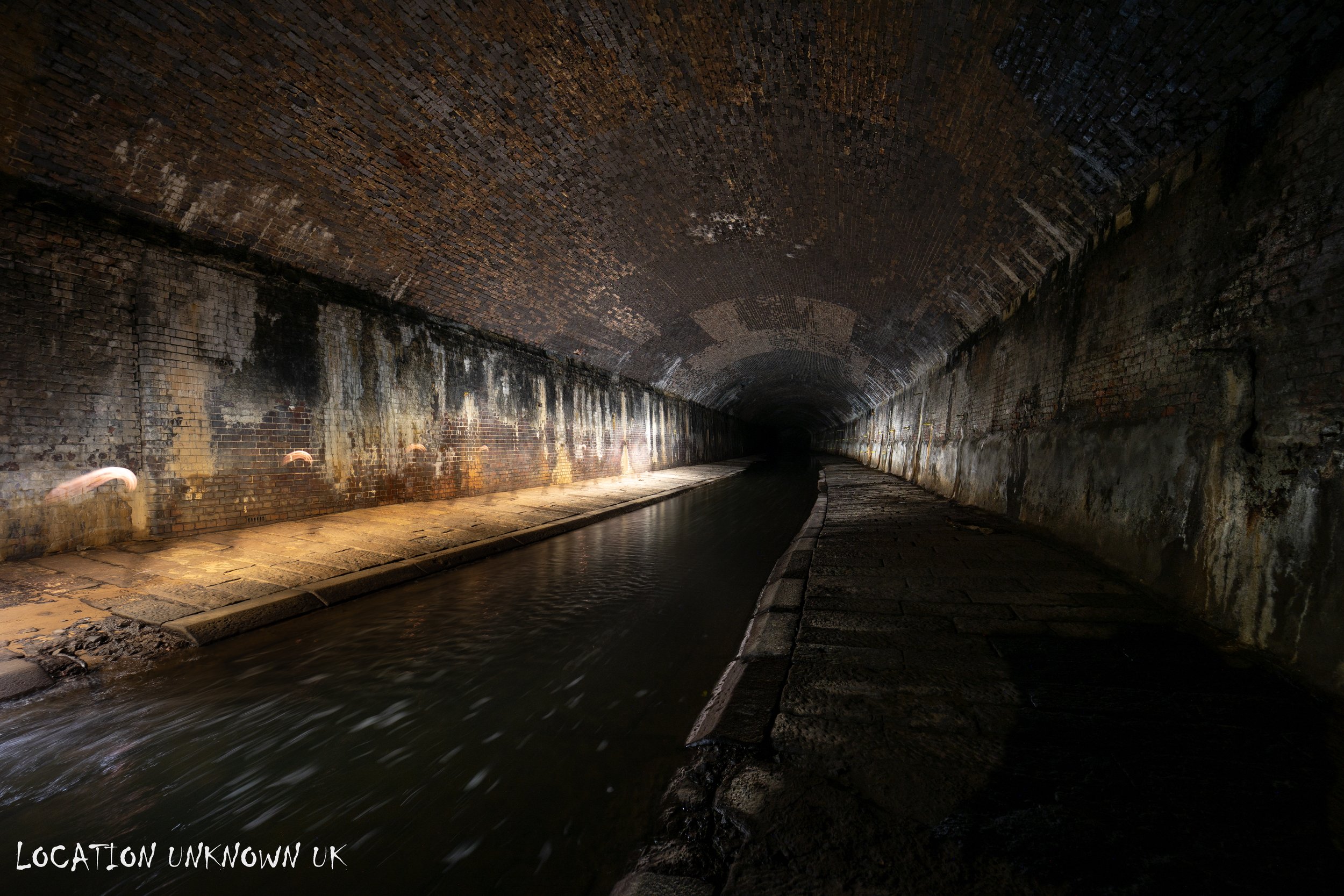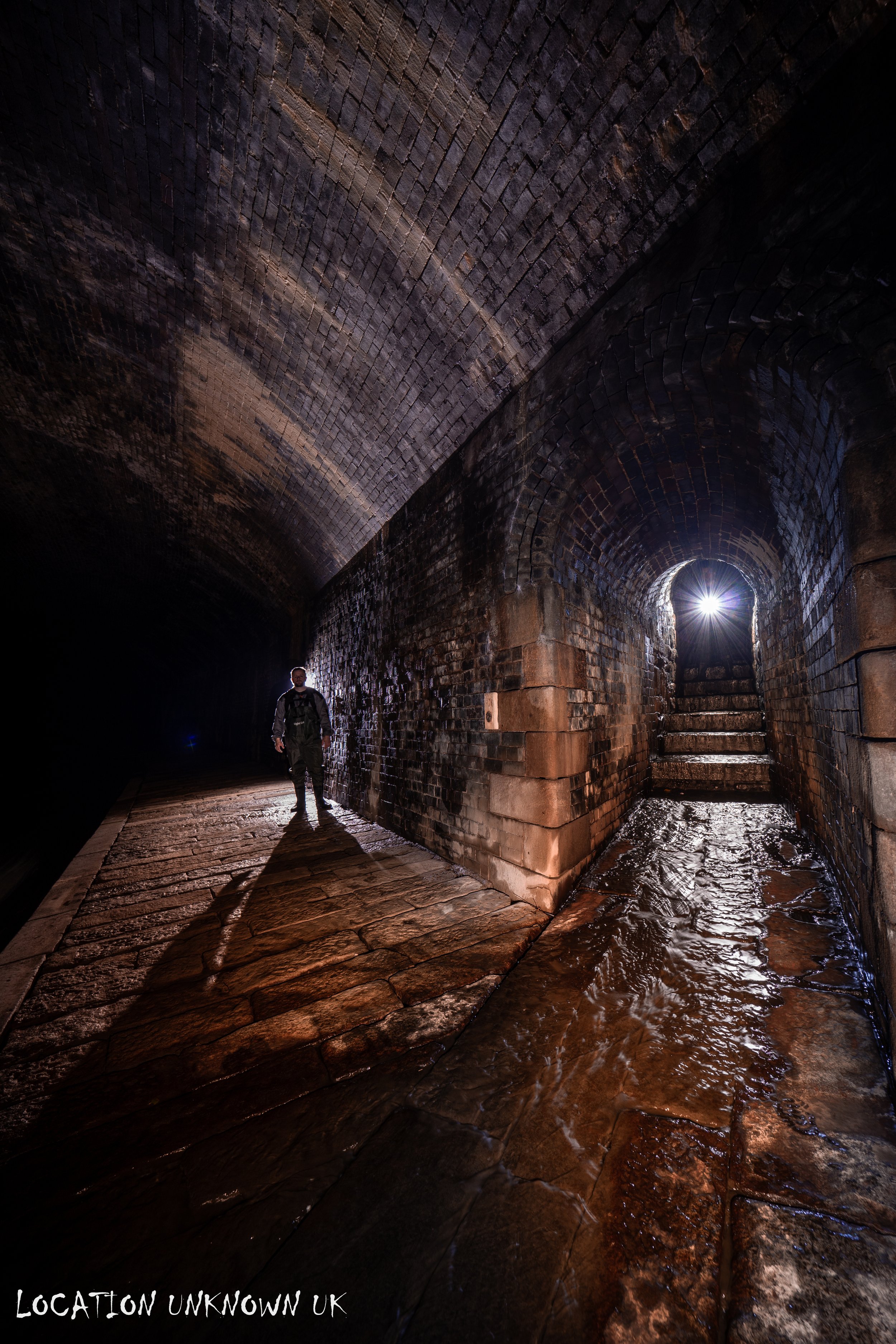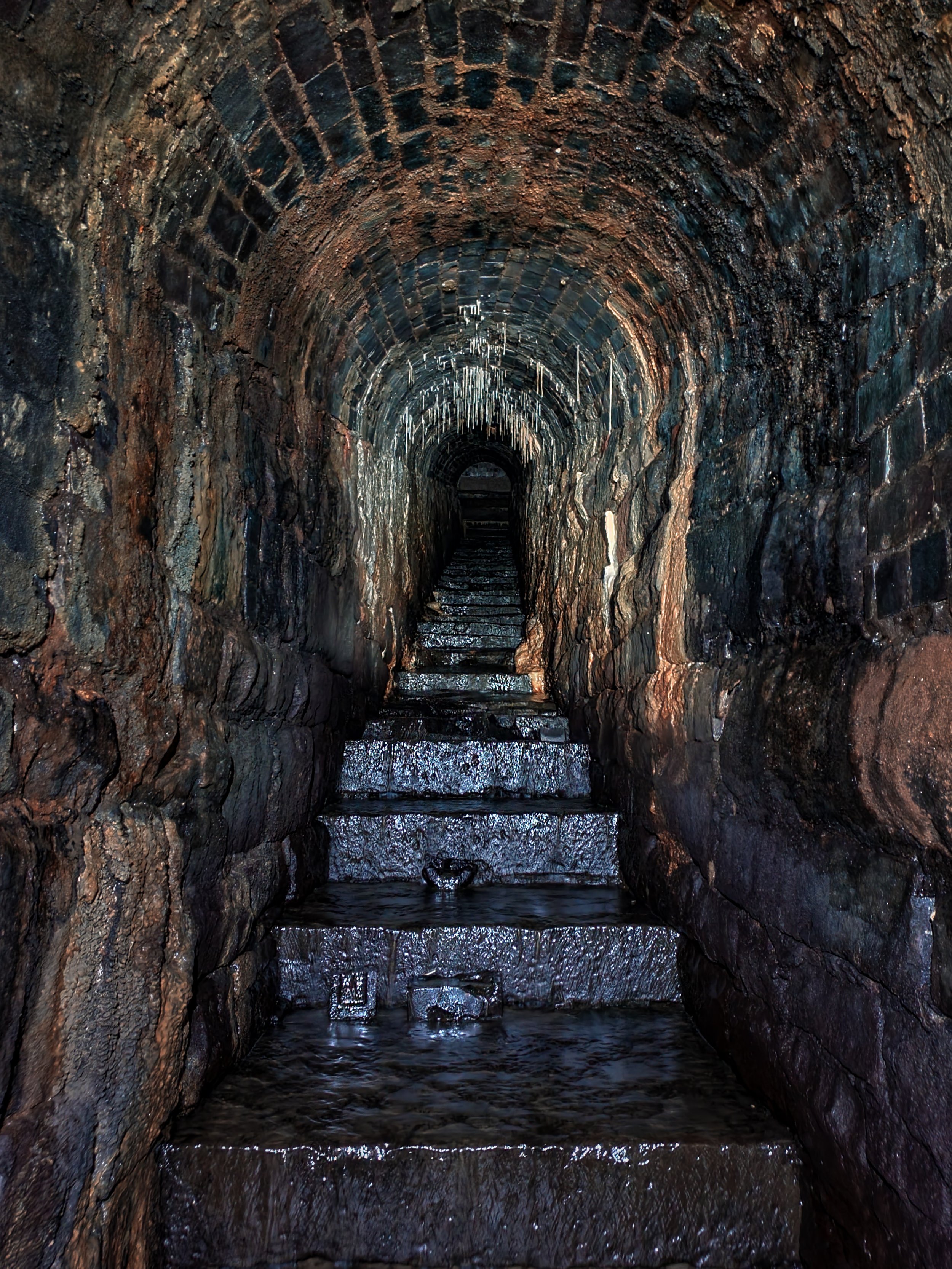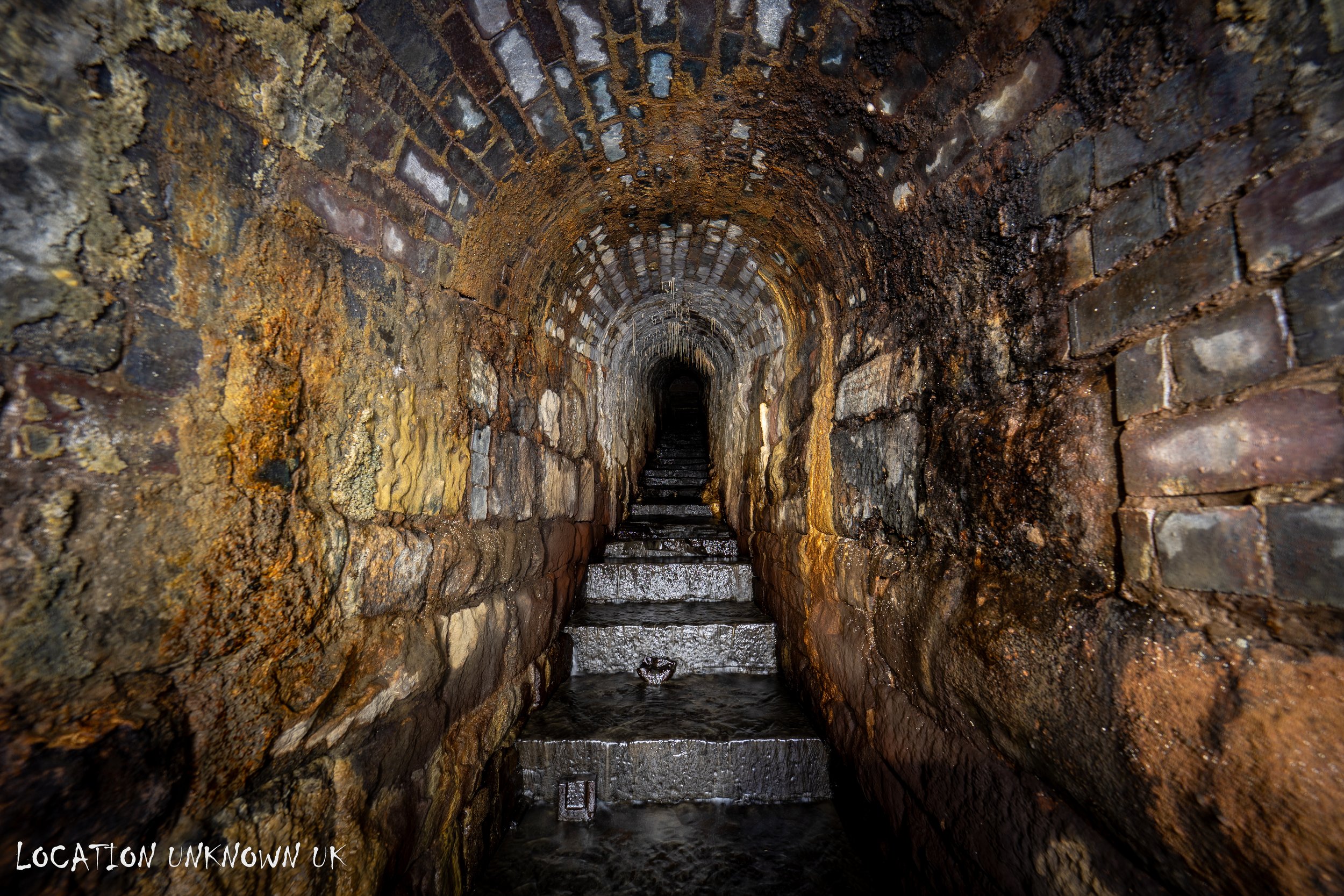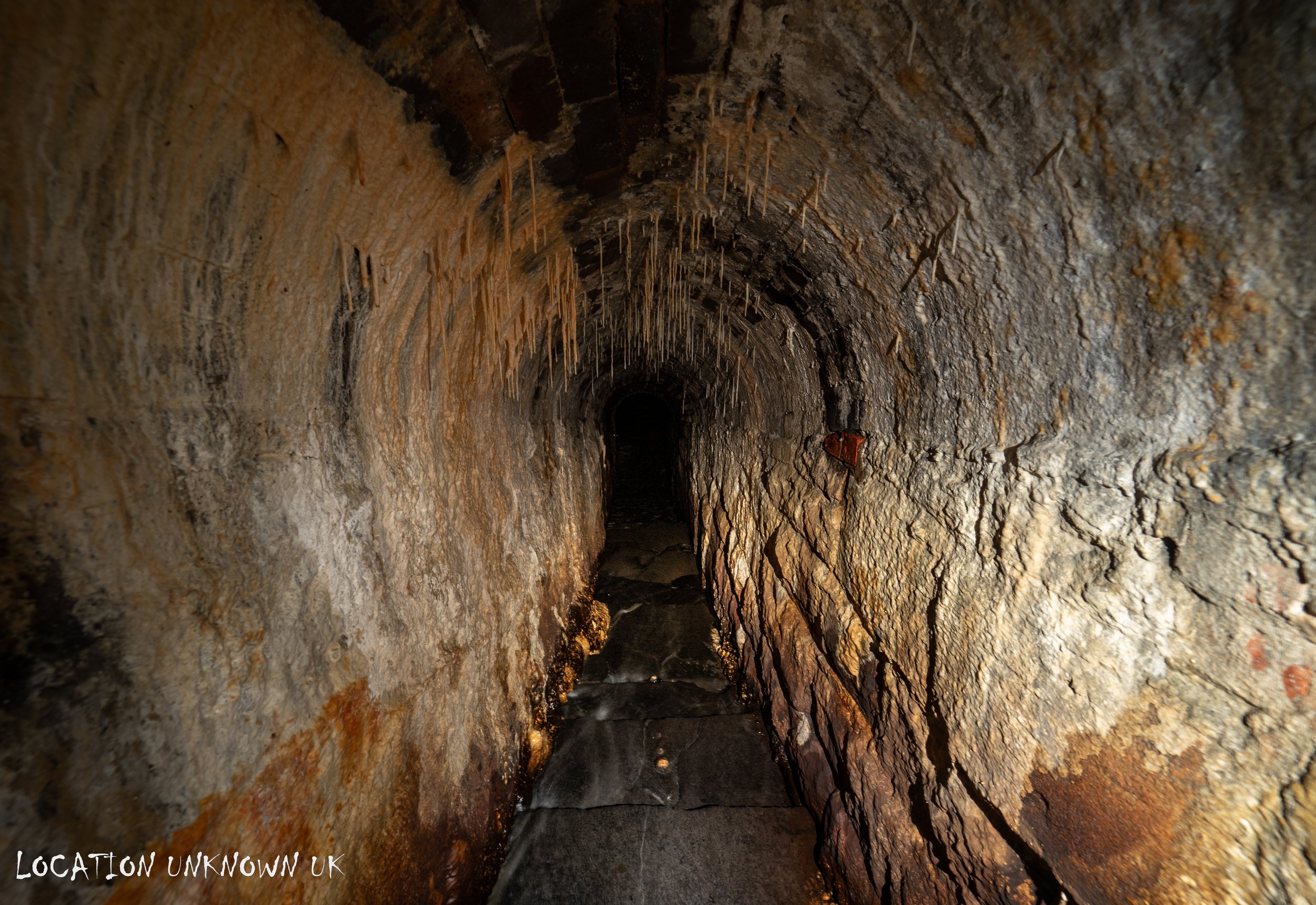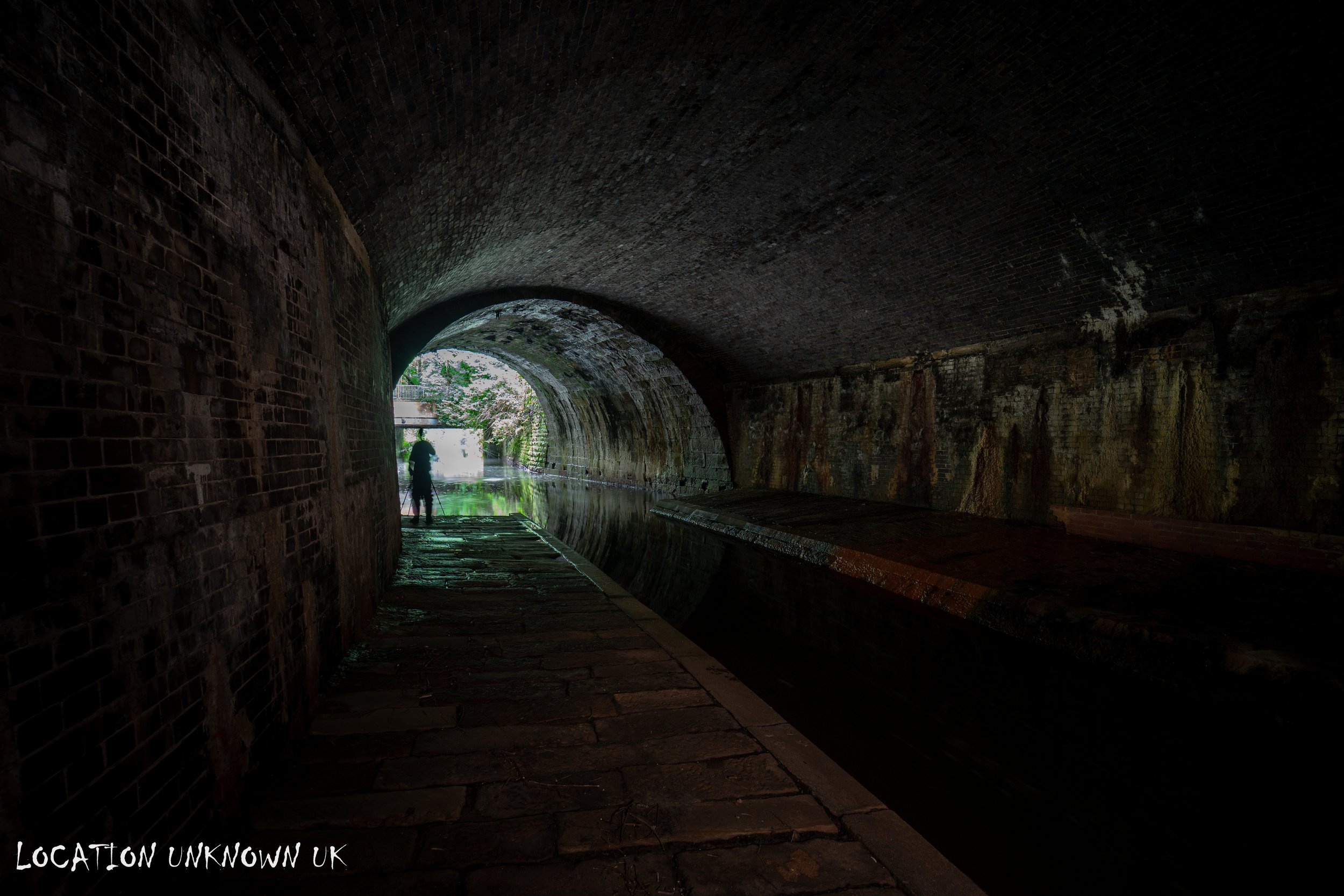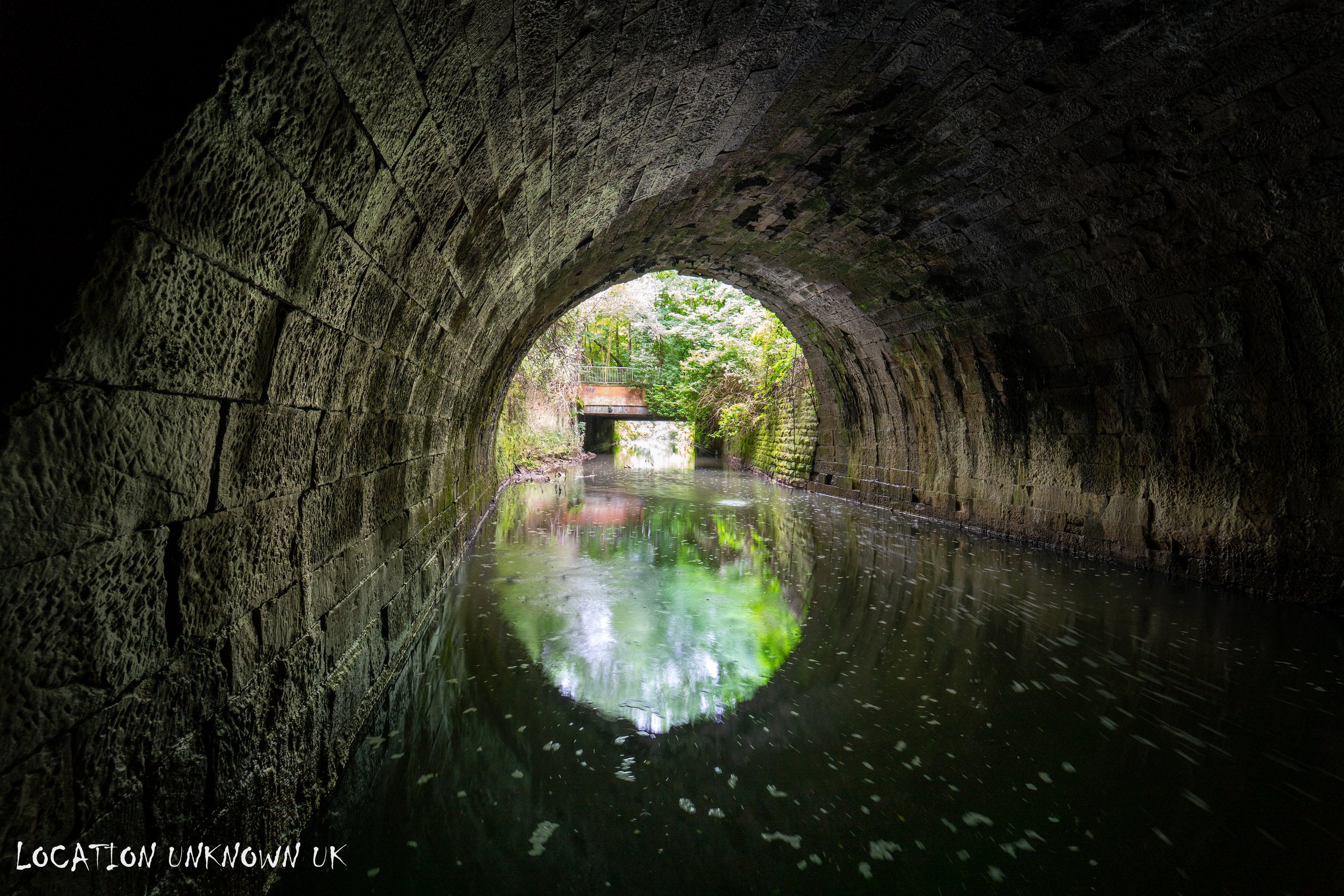The Medlock Culvert - Manchester
One of the first culverts i did along the Medlock which is rich with all sorts of drain goodness and a nice place to take the dog for a walk in the summer. This section of the Medlock which runs parallel to Phillips park underwent a huge culverting project after fatal flooding swept a lot of the cemetery away. This resulted in over 7million bricks being layed to create a mostly open air culvert with a small central channel that would carry the river safely on its course without bursting the banks again.
My first visit here i managed to find a section of headstone in the river with the word ‘Died’ visible and a pile of bones. The culvert here is quite large and continues underneath the road before it outfalls underneath the Ashton canal. Its one of the few culverts that can be easily done without waders which is always nice.
There are a couple of notable features, the first being a small set of step leading into a concrete shaft and with an groundwater infall coming through. The culvert has a slight curve to the left and at the outfall is a steep set of stairs leading up to a small channel presumably taking in surface water from the road above.
History
“This large culvert spans over 600m taking the river Medlock through Phillips park in Manchester. The culvert is constructed of stone and brick and was built to divert the river after a series of floods. The worst of these floods occurred in 1872 and is described as ‘the flood that divided a city’. During the early hours of the morning heavy rain started to pour on the city and continued for over 13 hours, the flood defenses of the time were no match for mother nature and inevitably the Medlock burst its banks. The nearby cemetery was overcome with water and newly laid graves had their coffins swept away and carried out towards the city, for three days bodies were being recovered and sent to the local police station, which was acting as a makeshift mortuary. The furthest body was discovered in Castlefield, some three miles from the cemetery. In total the number of bodies recovered was 76 and today parts of old gravestones can still be found in the riverbed.”
